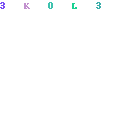Natural impact[edit]
Since they are reusable, menstrual cups help to decrease strong waste.[38] A few dispensable menstrual cushions and plastic tampon implements can enjoy 25 years to reprieve down in the sea and can cause a huge natural impact.[39] Biodegradable sterile choices are likewise available,[40] and these disintegrate in a brief timeframe, however they should be treated the soil, and not discarded in a landfill.
While considering a 10-year time span, squander from reliable utilization of a menstrual cup is just a little part of the misuse of cushions or tampons.[4] For instance, whenever contrasted and utilizing 12 cushions for every period, utilization of a menstrual cup would include just 0.4% of the plastic waste.[4] Every year, an expected 20 billion cushions and tampons are disposed of in North America. They normally end up in landfills or are burned, which can significantly affect the climate. A large portion of the cushions and tampons are made of cotton and plastic. Plastic requires around at least 50 years and cotton begins corrupting following 90 days in the event that it is composted.[41]

Considering that the menstrual cup is reusable, its utilization significantly diminishes how much waste produced from menstrual cycles, as there is no everyday waste and how much disposed of bundling diminishes too. After their life expectancy is finished, the silicone cups are placed in landfills or burned. Menstrual cups might be discharged into a little opening in the dirt or in manure heaps, since menstrual liquid is an important compost for plants and any microorganisms of physically communicated illnesses will rapidly be obliterated by soil microbes The water used to wash the cups can be discarded similarly. This diminishes how much wastewater that should be dealt with. In non-industrial nations, strong waste administration is frequently deficient. Here, menstrual cups enjoy an upper hand over dispensable cushions or tampons as they don’t add to the strong waste issues in the networks or produce humiliating reject that others might see.
History[edit]
An early rendition of a shot formed menstrual cup was protected in 1932, by the maternity care gathering of Glasson and Perkins.[43] Leona Chalmers licensed the primary usable business cup in 1937.[44] Other menstrual cups were licensed in 1935, 1937, and 1950.[45][46][47] The Gassaway brand of menstrual cups was presented during the 1960s, however it was anything but a business success.[48] Early menstrual cups were made of rubber
In 1987, another plastic nhuoc diem cua coc nguyet san menstrual cup, The Attendant, was fabricated in the US. This ended up being the principal monetarily feasible menstrual cup and it is as yet accessible today. The primary silicone menstrual cup was the UK-fabricated Mockup in 2001. Most menstrual cups are presently produced from clinical grade silicone as a result of its toughness and hypoallergenic properties, however there are likewise marks made of TPE (thermoplastic elastomer). Menstrual cups are turning out to be more well known around the world, with various brands, shapes, and sizes on the market.[8] most are reusable, however there is something like one brand of expendable menstrual cups presently manufactured